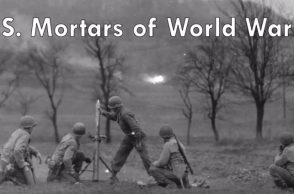The MG42 is perhaps one of the most infamous weapons of war ever created, mainly because the intimidating qualities of its high cyclic rate of fire. The German military made effective use of it during the closing years of the Second World War and, although the cartridge it fires – 7.92×57mm Mauser – is no longer in widespread military use, the MG42’s roller-locked recoil operation influenced designs that remain in military service today. Since a variety of reliable sources on the internet provide deep and factual examinations of the history and development of the MG42, this short article will deal with another part of the weapon’s history.
By Martin K.A. Morgan
Thousands of MG42s are legally owned in the United States by collectors who purchased them in compliance with the regulations spelled out by the National Firearms Act of 1934. This law provides a heavily regulated category of civilian ownership of machine guns, suppressors, short-barreled rifles and short-barreled shotguns which requires fingerprints, a background check, and registration. Eligible U.S. citizens over the age of 21 with no criminal arrest record pay a one-time $200 transfer tax and wait up to 15 months before being able to take ownership of a legally registered firearm like an MG42. Making things even more complicated, keeping an MG42 running in the 21st Century is no longer easily affordable. This is because of not just the sales price of the gun itself, but also the price of the ammunition. It used to be that, three or four decades ago, feeding a 42 was not a particularly costly prospect, but things are much different today. Most of the surplus ammunition that used to make shooting much more affordable is no longer available, leaving factory new ammunition as the most reliable option for a day at the range. The eighty-nine year old Serbian ammunition maker Prvi Partizan (aka PPU) produces a 198g full metal jacketed 7.92x57mm cartridge that makes the MG42 run like the day it was made.
On a recent, unseasonably cold Sunday afternoon in rural Louisiana, an MG42 made by Maschinenbau und Gerätebau GmbH, Berlin-Tegel (also known as MAGET) in 1943 was put through the paces with several hundred rounds of PPU ammunition. This video shows just how efficiently that ammunition makes the 42 do what it was designed to do. No malfunctions were encountered at any point and, because the outside temperature was below 32° Fahrenheit/0° Celsius, the weapon did not build-up heat rapidly as MG42s are prone to do in warmer weather. While reading about “Hitler’s Buzz Saw” in abstract is informative, being able to shoot one and then review footage of it in operation provides an irreplaceable lesson in World War II history.
Private ownership is the only outlet for experiencing this rare insight into the realities of combat against the Third Reich, and it is only because individuals who have the interest and the resources, that a video like this can exist. Otherwise, we would only have the occasional training film and the personal accounts of men who faced this very dangerous weapon in action. As veterans recede from the living memory of World War II, it is up to a post-veteran generation to preserve the war’s history and promote a better understanding of the conflict that gave birth to the MG42.





